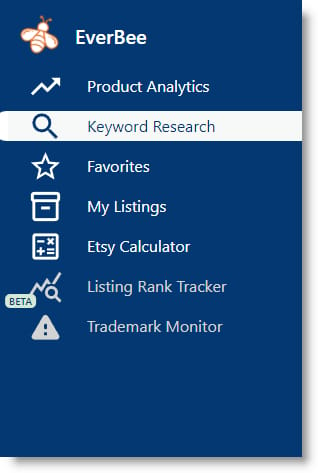Hey there, aspiring authors and side-hustlers! Ever wondered why your self-published book isn't raking in the big bucks? You're not alone.

ai Data Analysis to Find the Best Selling Keywords (midjourney image by author)
But what about all the influencers and bloggers who are making thousands monthly? Let's follow a few tutorials on how to make money selling books on Amazon, and I’ll share an untapped market where you could earn 30k annual passive income as an author.
First things first, let's talk about the power of self-publishing on Amazon Kindle and other lesser known platforms where sales are happening. Gone are the days when authors had to rely solely on traditional publishing houses. With the rise of online platforms and e-books, you have the freedom to take control of your publishing journey. Self-publishing allows you to retain creative control, set your own prices, and earn higher royalties. It's a game-changer!
In this area of ai writing generators, online book publishing platforms have become a goldmine for authors and writers. Many promoters are talking about the potentials if you advantage of platforms like Amazon Kindle Direct Publishing (KDP), to distribute your e-books and instantly tap into a massive reader base. The power is in your hands!
So, you've written a book!
You've poured your heart and soul into it,
and you're waiting for the sales to roll in…
But… they don't.
Why?
Because you're thinking like an "author," not a "publisher." Authors often hope to be discovered, but publishers focus on what sells. Time to switch gears!
Step 1: Adopt a Publisher Mindset
Action: Stop thinking like an author and start thinking like a publisher.
Time: Ongoing research Amazon Top Sellers and see what is a the top.
Why: Publishers focus on what sells, not just what's creatively satisfying.
Why Most Authors Fail To Make Money
New authors are so passionate about their message, they don't put much thought into thinking about what people might be searching to buy.
In fact, it took me a good while to really appreciate the importance of the use of top-volume keywords, which I’ve been learning by creating step by step business plans for AI Tools. We model others who have demonstrated how they became wealthy and successful book publishers on Amazon, and create tutorials that anyone can actually follow!
The Secret to Dominating Amazon's First Page
In order to sell books on Amazon, your book needs to be in the places that buyers are seeking to purchase solutions. And you also need to be on the first page of the search results. The higher up on that first page, the better, the more sales your book is going to make.
One of the biggest factors that can give your books the best chance of being on that first page is the use of top-search-volume keywords within your book.
That means you must plan out your keywords before you write. It’s not a good idea to write and then stuff keywords into your copy… worse to write and hope you naturally have keyword balance that outranks a well-thought-out-plan.
The Magic Ingredient: AI Data Analysis
You heard it right! ai data analysis is your best friend here. Let's break it down.
Step 2: Keyword Research
Time: 90 minutes to find relevant keywords. Get a spreadsheet ready to copy keywords and competitor data. Get a timer so you are quick on each step outlined here. Keyword research is an ongoing study so don’t get overwhelmed trying to complete it before moving on.
Why: You need to know what people are searching for to position your book effectively.
Your Ultimate Guide to KDP Keyword Research
Where does keyword research fit into the overall book creation and publication process? Spoiler: keyword research is never an afterthought for the top sellers on Amazon. It is the starting point.
Many authors do those last two steps the other way round. They write a the book they are passionate about, and then they learn about keyword research. But all is not lost. In this beginner's guide for doing KDP keyword research, we’ll find those hot keywords that are actually making sales.
Here’s My Starting Approach
The steps that I’m going to take when publishing my next books are initial niche research, which is basically finding out where the sales are, and using AI writing tools to help me recraft a course that I wrote in 2015, and turn it into a book or two.
I’ll do the keyword research in this three hour work session, and after that I’ll actually get onto the book out line and creating the content for my book, blog posts and my email newsletter as well.
The Goldmine of Keywords on Amazon
The first step in doing our keyword research is actually coming up with a list of keywords. Keywords are the search terms that customers type into the search bar on Amazon. If we can find out what search terms customers are typing, we can then optimize our product around those search terms to give our books the best chance of appearing when they do their searches.
I do a lot of my keyword research on Amazon Best Sellers, the US version, because that's where most of the sales are made. But I also collect keywords from YouTube and Etsy, as I’ll show below.
You can dig down into the categories and sub categories on the best selling items on Amazon, including the Books category.
The super power tool for Amazon keyword research is adding the free chrome plugin for Helium 10 for some amazing insights into other people’s sales!
(grab it here).

Drilling down to best selling books in my niche (screenshot by author)
We decide on what book we're going to create, in this case, I’ll drill down into books on finance and find my way to cryptocurrency trading books. They are a bit out of favor for now, but let’s see the data.
Let’s get specific and collect the data for each book.


Sales Numbers With Keyword Data


Cryptocurrency trading book revenue data from Helium (screeny by author)
Lets compare a different niche… and we can see the REVENUE difference!
The Crypto niche is sleepy indeed, while the artificial intelligence niche has a LOT more sales volume. Let’s get more specific.

Artificial Intelligence book sales data from Helium 10 (screenshot by author)
Take time to browse through your niche.
Another tool within Helium 10 is a keyword tool called Magnet.

My membership level only provides limited data, but enough for starting points.

Step 3: Assess Profit Potential
Action: Check the best and worst-ranked books for your keyword on Amazon.
Time: 30 minutes to analyze the profit range.
Why: Knowing your profit potential helps you set realistic goals.
Google Ads Keyword Tool
Even though I’m not running ads, the google ads keyword planner is super powerful. I was able to search out some variations based on the seed phrases I collected in my notepad document and expand that list to about 4000 phrases, with data that I can easily export to Google Docs.

From the 1000’s of keyword variations, I created a custom google sheets formula that multiplied the low bid value by the number of searches, divided by the competition ratio. The top 100 phrases are really great! I’ll process them more.

Step 4: Competitor Analysis
Action: Study the top-ranked books in your category.
Time: 45 minutes to analyze covers, keywords, and reviews.
Why: You need to know what you're up against to create a better product.
Amazon is not the only place where people are making good money selling books. Have you checked out what’
s up on Etsy?
I use the free version of EverBee and really love the data.

I was able to dig into fantastic insider revenue information for several products in this niche. Certainly worth more time and attention, but collected enough to keep me busy until my free search credits renew next month.

Everbee data on Etsy Sales (screenshots by author)


Just these three products together generate an estimated $2900 per month and that ads up to over $30,000 per year!
Looks worth while, and I’m sure we did not uncover the top sellers yet.
Step 5: Sort Keywords By Semantics
Action: Take a large list of the top competition value ratio keywords and instruct ChatGPT to sort this list of keyword phrases base on semantic similarities.
Time: 15 minutes.
Why: Now we have seed keywords to use within the chapters of our book as well as within future blog posts. I’ll share how to use ChatGPT custom instructions to build these hot keywords into the natural flow of our future newsletters and posts.
For example, I gave ChatGPT 300 phrases and I now have 14 groupings of semantically related, top-searched-for phrases. (ChatGPT actually seemed to complain about the size of the task…)

Build Passive Income Streams with ChatGPT
Alright, you've got your keyword data. Now what? Now about starting on your Newsletter content? Or add some hot keywords to your product review posts?
Here are some projects with AI Tools you can build in an evening:
Wrapping Up

Keyword research and ai data analysis (midjourney image by author)
So, are you ready to stop leaving your book sales to chance and start making some real money? It's all about the KEYWORD data!
We now have a list of top competitors. (Make a spreadsheet, collect all the information you can about the authors, follow them everywhere).
We have our newly researched list of keywords, AND we have sorted into semantic groupings to help enrich the value of the keywords that we will write into each section of our upcoming books and blog posts.
This is HUGE value and I’m so excited to roll out the plan of how to include these proven keyword groupings in your next newsletter and blog posts, and I’m eager to share every case study with you!
Engage with our growing community!
What's the biggest challenge you've faced in self-publishing? Share your thoughts on our LinkedIn page. We'd love to hear from you!
↳
Recommended Reading
With so many small newsletters with big claims, these are the two that stand out from twenty startups.
Simple AI
➤ Simple.ai offers the Agent AI newsletter, which helps over 100,000 subscribers learn to use AI agents to enhance their careers or businesses. It covers practical insights, strategies, and updates on AI developments, making it easier for readers to stay ahead in the AI landscape. - Read Here.
The AI PMO
➤ The AI PMO provides AI tools, strategies, prompts, and workflows to enhance the efficiency of project management offices (PMOs). Over 634 PMO leaders receive free, practical AI insights every Thursday, helping them to amplify their team's efforts and become AI thought leaders in their organizations. - Read Here.


